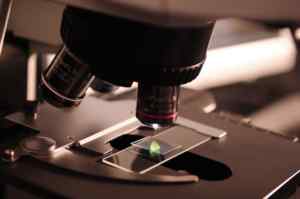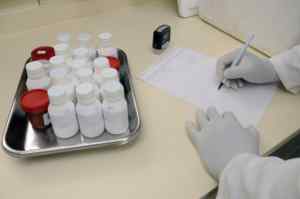Introduction
For centuries, contraception has played a vital role in family planning and population control. Among the various methods available, vasectomy stands as one of the most effective and reliable choices for men seeking a permanent solution for contraception. Let’s delve into the fascinating history of vasectomy, tracing its roots from ancient times to the modern-day, and exploring how it has evolved to shape the future of male reproductive health.
 Ancient Beginnings
Ancient Beginnings
The concept of male sterilization has ancient origins, dating back thousands of years. Some evidence suggests that early attempts at vasectomy were practiced in ancient societies like ancient Egypt and China. However, these early methods were crude, with limited success rates and often resulted in significant health risks for the individuals involved.
19th Century Innovations
The modern history of vasectomy began to take shape in the 19th century when medical advancements and scientific knowledge progressed significantly. In 1823, a German surgeon named Dr. Karl Ferdinand von Graefe is believed to have performed the first intentional vasectomy for contraception. His approach involved removing a small segment of the vas deferens, the tube that carries sperm from the testicles, to prevent it from reaching the ejaculate. While this technique laid the foundation for future vasectomy procedures, it was not widely adopted due to the lack of understanding of reproductive anatomy and surgical expertise at the time.
Revolution and Acceptance
It wasn’t until the early 20th century that vasectomy gained more recognition and acceptance as a viable contraceptive option. In the United States, Dr. Harry Sharp is credited with performing the first successful vasectomy in 1897. However, it was during the 1920s and 1930s that vasectomy gained traction, thanks to Dr. T. J. McBride, who popularized the procedure as an effective means of contraception. This period saw an increase in the number of vasectomies performed and a gradual shift towards more standardized and safer techniques.
Eugenics and Population Control
During the early to mid-20th century, the rise of eugenics movements and concerns about population growth influenced the popularity of vasectomy. Some proponents of eugenics promoted vasectomy as a means to control the population and “improve” the human gene pool. These misguided ideologies led to the forced sterilization of marginalized and disadvantaged groups, raising significant ethical questions.
Modern Advances
In the latter half of the 20th century, vasectomy procedures continued to evolve with the introduction of modern surgical techniques. No-scalpel vasectomy (NSV), developed in the 1970s by Chinese physician Dr. Li Shunqiang, reduced the invasiveness of the procedure, resulting in quicker recovery times and fewer complications. NSV gained widespread popularity and is now the preferred technique for vasectomies in many parts of the world.
The no-needle technique, also known as needle-free vasectomy, replaces the needle with a specialized device that uses high-pressure to deliver the anesthetic solution through the skin and into the targeted area. It provides the faster and effective anesthesia with minimizes bruising and swelling, and it also enhanced patient experience with the reduced fear of pain and needles.
Reversibility and Family Planning
With advancements in microsurgery, vasectomy reversal became a viable option for men who wished to regain fertility after a change in circumstances or family planning goals. While reversal procedures can be successful, they are not always guaranteed, and it is essential for individuals considering vasectomy to think of it as a permanent decision.
Future of Vasectomy
As we look to the future, the field of male contraception is experiencing a resurgence of interest and research. Scientists are exploring innovative approaches to reversible male contraception, such as hormonal methods, non-hormonal interventions, and immunological approaches. These advancements aim to provide more options and flexibility for men to take an active role in family planning.
Conclusion
The history of vasectomy is a testament to the progress of medical science and the ongoing pursuit of safe and effective contraception methods. From its ancient beginnings to the modern-day, vasectomy has evolved to become a reliable option for men seeking a permanent contraceptive solution. With continued research and technological advancements, the future holds promising possibilities for male contraception, empowering individuals and couples to make informed choices about their reproductive health.
Note: One Stop Medical Center has provided the no scalpel vasectomy with no needle and no suture in the past 20 years. We have 2 office locations, Edina office in Minneapolis, Minnesota, and Casselberry in Orlando, Florida. Please fill out the online registration first if you are interested in vasectomy, we will call you in 2 business days, or call us at 1-888-992-0019 if any questions.


 Vasectomy may NOT be a good choice for the men in Minnesota who:
Vasectomy may NOT be a good choice for the men in Minnesota who: Led by a small team of scientists from the Institute for Therapeutics Discovery and Development at the University of Minnesota, the search for a non-hormonal male birth control pill ultimately zeroed in on the toxic substance known as ouabain. Found in two types of African plants, ouabain was traditionally used as poison on hunting arrows and is sometimes medically used to treat heart arrhythmias.
Led by a small team of scientists from the Institute for Therapeutics Discovery and Development at the University of Minnesota, the search for a non-hormonal male birth control pill ultimately zeroed in on the toxic substance known as ouabain. Found in two types of African plants, ouabain was traditionally used as poison on hunting arrows and is sometimes medically used to treat heart arrhythmias. As the sixth annual
As the sixth annual 
 Dr. Shu and One Stop Medical Center are proud to support WVD for a sixth straight year. Our clinic will offer a gift card for one free large pizza to all patients who
Dr. Shu and One Stop Medical Center are proud to support WVD for a sixth straight year. Our clinic will offer a gift card for one free large pizza to all patients who  After undergoing a
After undergoing a  The height of the eugenics movement (1920s to mid-20th century) saw compulsory sterilization programs established in over 30 states, resulting in over 60,000 sterilizations of often healthy people. Criminals and prison inmates were especially targeted, as well as those deemed “feeble-minded,” mentally deficient, or simply capable of passing on undesirable genes.
The height of the eugenics movement (1920s to mid-20th century) saw compulsory sterilization programs established in over 30 states, resulting in over 60,000 sterilizations of often healthy people. Criminals and prison inmates were especially targeted, as well as those deemed “feeble-minded,” mentally deficient, or simply capable of passing on undesirable genes.
 At World Vasectomy Day, local Mexican and international doctors will provide free vasectomies, along with live-streamed interviews with family planning experts, patients, and their families. This will be Dr. Shu’s 5th year participating in the event, and the One Stop Medical Center will offer free large pizza.
At World Vasectomy Day, local Mexican and international doctors will provide free vasectomies, along with live-streamed interviews with family planning experts, patients, and their families. This will be Dr. Shu’s 5th year participating in the event, and the One Stop Medical Center will offer free large pizza.